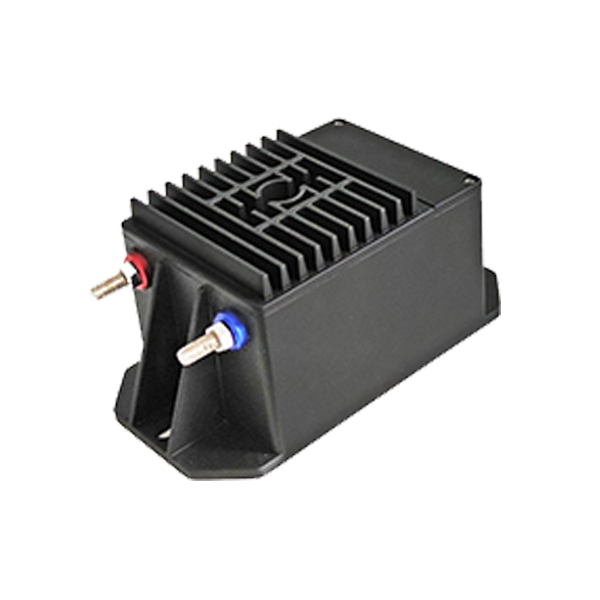What is voltage sensor or voltage transducer
A voltage sensor or voltage transducer, is a device that converts the measured AC voltage, DC voltage, and pulse voltage into a linearly proportional output DC voltage or DC current, and isolates and outputs analog or digital signals. Voltage transducers are essential in electrical engineering for accurate measurements and monitoring of voltage levels. These innovative devices provide insights into the electrical potential difference, which can be used in a variety of applications.
While Fluxgate voltage transducers, also known as fluxgate magnetometers, are sophisticated devices that use magnetic hysteresis principles to monitor voltage levels. Their sophisticated design and use of magnetic characteristics allow for accurate voltage readings, making them indispensable tools in a wide range of scientific and technical applications.
How Do Voltage Transducers Work?
Voltage transducers work by translating voltage signals into proportional output signals. The basic operation entails detecting the voltage across a circuit or component and producing an output signal that accurately represents the voltage level.
Principles of Operations
A sensing device, conditioning circuitry, and an output stage are common components of voltage transducers. The sensing element, which is frequently based on resistive, capacitive, or electromagnetic principles, detects the voltage across a specific point in the circuit.
Specifically for fluxgate high precision voltage transducer, magnetic hysteresis is a phenomena that occurs in fluxgate voltage transducers. The behaviour of certain materials to retain their magnetisation even after the external magnetic field that caused it has been withdrawn is referred to as this phenomenon. This property is used to produce a sensitive magnetic sensor in the setting of voltage transducers. A magnetic core, exciting coils, and sensing coils are common components of fluxgate voltage transducers. The magnetic core is often formed of a material with high magnetic permeability, which increases its sensitivity to magnetic fields. The exciting coils generate an alternating magnetic field that interacts with the core, causing it to magnetise and demagnetise in cycles.
The variation of the magnetic field causes a change in the magnetisation of the core, resulting in a variable magnetic flux within the core. The detecting coils wrapped around the core detect changes in magnetic flux. The interplay of changing magnetic flux and sensor coils produces a voltage output proportional to the magnitude of the input voltage.
Signal Processing
When the voltage is detected, the conditioning circuitry kicks in. To assure accuracy and interoperability with measuring equipment, this circuitry amplifies, filters, and transforms the raw voltage output. Signal conditioning improves output signal precision, allowing for more accurate data interpretation.
Output Stage
The processed signal is then transformed into an output format that external systems can easily use. The output can be an analogue voltage, current, frequency, or even a digital signal, depending on the application. This adaptability allows for smooth integration into a wide range of monitoring and control configurations.
Applications of Voltage Transducers
Voltage transducers are used in a variety of industries and sectors to improve safety, efficiency, and performance. Among the notable applications are:
Energy Management and Power Distribution
Voltage transducers play an important role in power distribution networks by monitoring voltage levels and ensuring steady and dependable energy supply.
Automation in the Industrial Sector
Voltage transducers are essential in industrial automation for monitoring machinery voltage to prevent overloads and optimise efficiency.
Systems for Renewable Energy
Voltage transducers are used to monitor and control voltage levels in solar panels, wind turbines, and other renewable energy sources.
Electrical Security
These transducers help to ensure electrical safety by detecting abnormal voltage levels and activating alarms or shutdowns to prevent damage or accidents.
Development and Research
Voltage transducers are used in research settings to give accurate voltage measurements that are required for experimentation and data processing.
Conclusion
Voltage transducers are essential instruments in electrical engineering and beyond. Their capacity to precisely detect and convert voltage levels allows for efficient operation, monitoring, and control in a wide range of applications. These devices enable companies to maintain optimal performance and safety requirements by utilising the principles of voltage sensing, signal conditioning, and output conversion.
Voltage transducers function quietly behind the scenes, allowing industries to run smoothly, researchers to collect exact data, and innovations to emerge, all while assuring electrical systems perform smoothly and securely. So, the next time you come across a voltage transducer, consider how important it is in keeping our technology world powered and safe.
FAQs
What exactly is a voltage transducer?
A voltage transducer is an electronic device that measures and converts the difference in electrical potential (voltage) into a quantifiable output signal.
How do voltage transducers function?
Voltage transducers detect voltage across a circuit, condition the signal, and transform it to an output signal compatible with measuring equipment.
What are the uses of voltage transducers?
Voltage transducers are utilised in a variety of applications including power distribution, industrial automation, renewable energy systems, electrical safety, and research and development.
How do voltage transducers improve electrical system safety?
Voltage transducers monitor voltage levels, detecting irregularities and activating alarms or shutting down systems to prevent damage or accidents.
Voltage transducers: What role do they play in renewable energy systems?
Voltage transducers optimise the performance and efficiency of renewable energy sources such as solar panels and wind turbines by monitoring and controlling voltage levels.

